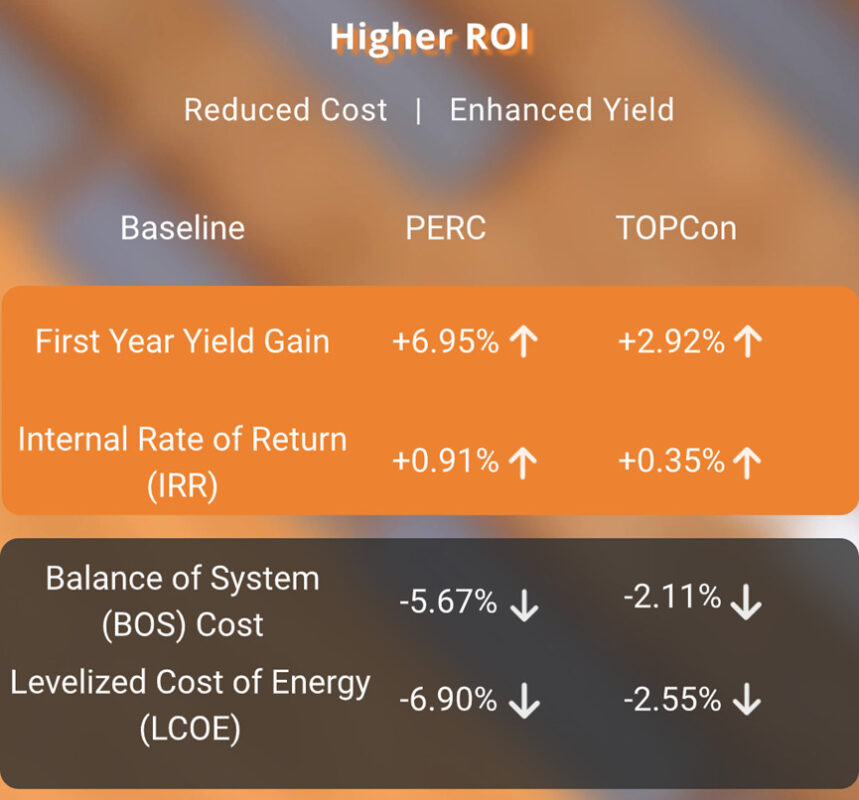Desert areas, with abundant solar resources and available land, are increasingly seen as optimal sites for PV power plant construction, with Huasun’s heterojunction (HJT) solar modules being recognised as a solution in such environments.


In a utility-scale PV plant with horizontal single-axis tracking in Saudi Arabia, Huasun’s 720W HJT module generates approximately 115 hours (6.95%) more compared to a 660W PERC module, and 71 hours (2.92%) more compared to a 700W TOPCon module.

HJT modules feature ultra-high bifaciality of 95%, enhancing power generation on both sides and significantly boosting overall efficiency. This capability is particularly advantageous in high-reflectivity environments such as deserts, where backside irradiation is stronger than in typical scenarios, resulting in a substantial increase in overall module power output.

The HJT solar cell’s inherent bifacial symmetrical structure and distinctive material properties can facilitate enhanced electron mobility and mitigate the risk of hotspots, thereby improving overall efficiency.
Combined with Huasun’s advanced manufacturing processes, its HJT modules can maintain high efficiency and stable power generation performance in high temperature environments, improving the reliability and economic benefits of a PV system.

Huasun HJT modules offer significant advantages in desert scenarios, featuring higher bifaciality and an optimized temperature coefficient. With high efficiency and low degradation, the modules not only reduce BOS costs, but also lower the LCOE.

